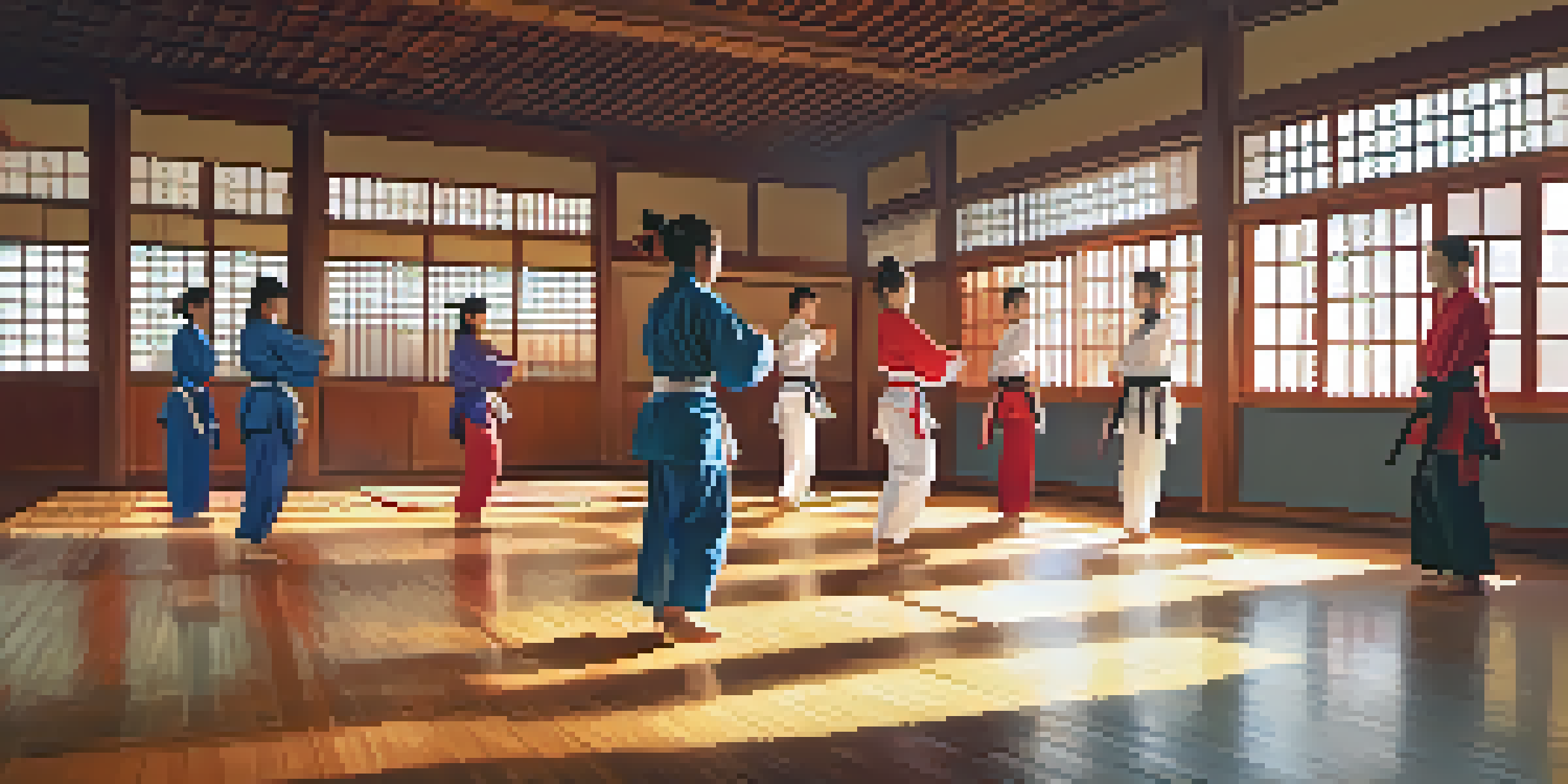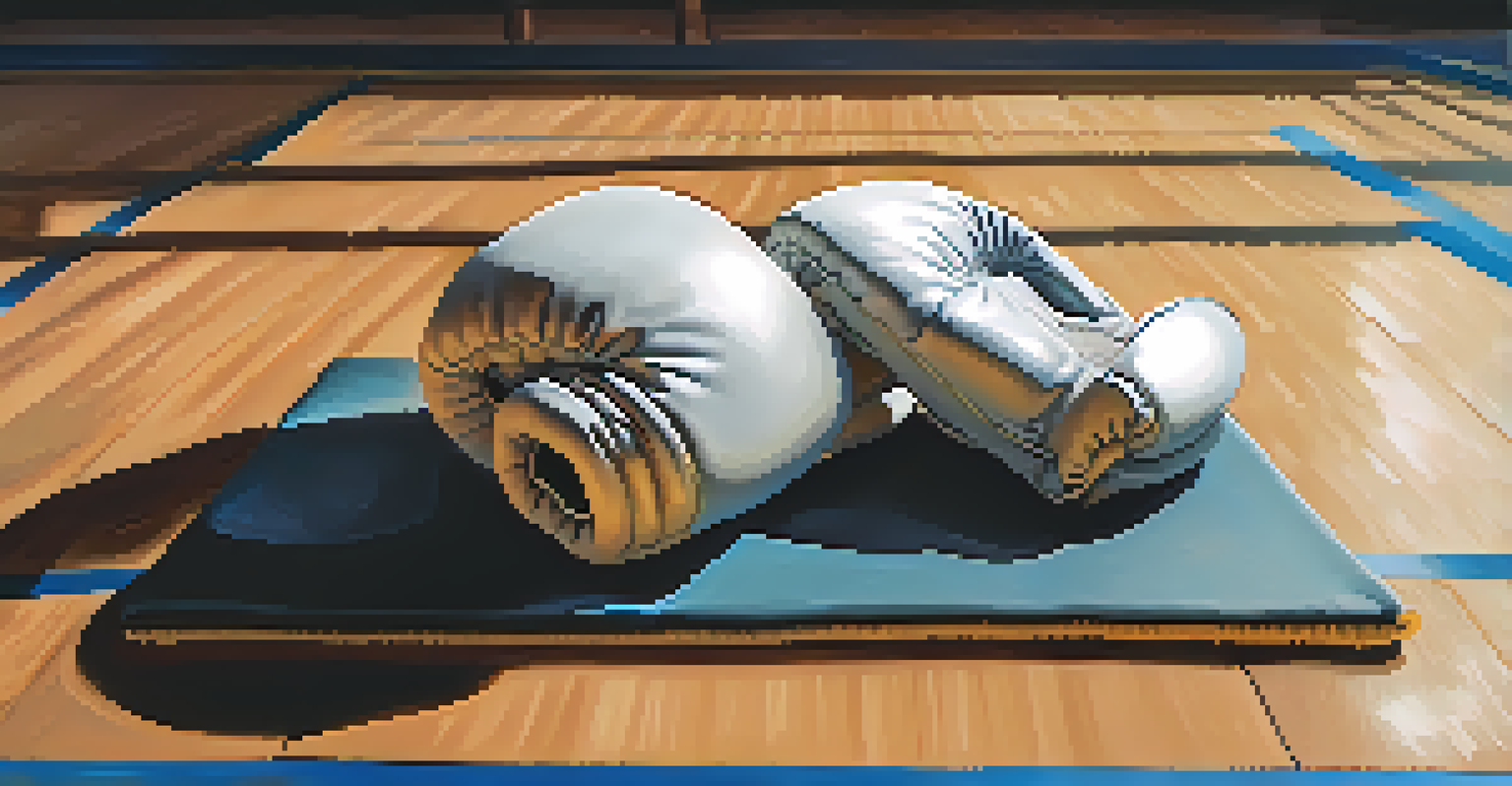Creating a Self-Defense Plan with Martial Arts Techniques

Understanding the Importance of Self-Defense
Self-defense is not just about physical strength; it's about being prepared for unexpected situations. In today's world, having a self-defense plan can empower you and enhance your confidence. By incorporating martial arts techniques, you can learn how to protect yourself effectively, both mentally and physically.
The best defense is a good offense.
Many people think self-defense is only for those who want to fight, but it’s really about awareness and prevention. Understanding your surroundings and recognizing potential threats can often be the best defense. Martial arts training emphasizes situational awareness, helping you identify and avoid dangerous situations before they escalate.
Additionally, learning self-defense can also foster a sense of community and personal growth. Many martial arts schools promote values like respect, discipline, and perseverance, which can be beneficial in all aspects of life. Thus, creating a self-defense plan is not just about physical safety; it’s a holistic approach to personal empowerment.
Choosing the Right Martial Arts Style for You
With so many martial arts styles available, selecting the right one can feel overwhelming. Each style has its unique techniques and philosophies, so it’s important to find one that resonates with your personal goals. For example, if you’re looking for a striking art, you might consider boxing or kickboxing, while grappling enthusiasts may lean towards Brazilian Jiu-Jitsu.

Consider your physical abilities and preferences as well. Some styles may require more flexibility or strength, while others might focus more on technique and strategy. Try attending a few classes of different styles to see which one feels most comfortable and enjoyable for you.
Empowerment Through Self-Defense
Self-defense is about being prepared and aware, enhancing both physical and mental confidence.
Ultimately, the best martial arts style for self-defense is one that you feel motivated to practice consistently. Regular training is essential in building muscle memory and confidence, which are critical in a self-defense situation. So, choose a style that you enjoy, and you’re more likely to stick with it!
Setting Realistic Self-Defense Goals
When creating a self-defense plan, it’s crucial to set realistic goals. These goals should be specific, measurable, achievable, relevant, and time-bound (SMART). For instance, instead of just saying, 'I want to get better at self-defense,' you might set a goal to attend two martial arts classes per week for three months.
Self-defense is not just about physical strength, but about being aware of your surroundings and having the confidence to act.
Having clear goals not only keeps you focused but also helps to track your progress. Celebrate small victories along the way, whether it’s mastering a new technique or feeling more confident in your abilities. This positive reinforcement can motivate you to continue your training and improvement.
Moreover, it’s beneficial to include both short-term and long-term goals in your self-defense plan. Short-term goals can help you stay engaged in the present, while long-term goals can provide a roadmap for your growth in martial arts. This balanced approach will ensure you develop both skills and confidence over time.
Incorporating Techniques into Your Daily Life
Once you've chosen a martial arts style and set your goals, it's time to start incorporating techniques into your daily life. One way to do this is by practicing simple movements and drills at home. For instance, shadowboxing can help improve your striking skills and footwork without needing a partner.
Additionally, consider integrating self-defense awareness into your routine. This could involve being mindful of your surroundings while walking to your car or practicing situational awareness during different activities. The more you consciously think about self-defense, the more it will become second nature.
Choosing Your Martial Arts Style
Selecting a martial arts style that aligns with your goals and preferences is crucial for consistent practice.
Finally, don’t forget to engage with your martial arts community. Attend seminars, workshops, or self-defense classes that focus on practical techniques. This not only reinforces what you’ve learned but also provides opportunities to practice with others and gain new insights.
Practicing Self-Defense with a Partner
Training with a partner can significantly enhance your self-defense skills. It allows you to practice techniques in a realistic environment, helping you to understand timing and distance. Find a trustworthy partner who is also interested in self-defense so you can learn and grow together.
During partner drills, focus on communication and safety. This includes discussing boundaries and ensuring that both partners feel comfortable with the intensity of the practice. Through cooperative training, you can build trust and improve your skills without the fear of injury.
Moreover, sparring can be a valuable way to simulate real-life situations. It teaches you how to react under pressure and adapt your techniques as needed. Make sure to approach sparring with an open mind; it’s an opportunity to learn from mistakes and refine your skills.
Building Mental Resilience for Self-Defense
Physical techniques are essential in self-defense, but mental resilience is equally important. Cultivating a strong mindset can help you remain calm and focused in stressful situations. Techniques such as visualization and mindfulness can improve your mental preparedness for potential threats.
Visualization involves imagining yourself successfully defending against an attacker, which can boost your confidence and reinforce positive outcomes. Similarly, mindfulness practices can help you stay present and aware of your surroundings, allowing you to react more effectively when needed.
Setting SMART Self-Defense Goals
Establishing specific, measurable, achievable, relevant, and time-bound goals helps track progress in self-defense training.
Remember, self-defense is as much about mental strength as it is about physical ability. By training your mind alongside your body, you’ll be better equipped to handle unexpected situations with confidence and composure.
Reviewing and Adjusting Your Self-Defense Plan
Creating a self-defense plan is not a one-time task; it requires ongoing review and adjustment. As you progress in your martial arts training, take time to assess your skills and goals regularly. This reflection will help you identify areas where you’ve improved and aspects that may need additional focus.
Consider keeping a journal to track your experiences and insights. This can provide valuable feedback on your training journey and help you stay accountable to your self-defense goals. Plus, it can serve as a source of motivation as you look back on how far you’ve come.

Lastly, be open to adapting your plan based on new experiences or changes in your life. Whether it’s trying a new martial arts style or incorporating different self-defense techniques, flexibility in your approach can enhance your overall effectiveness. Remember, the aim is to create a self-defense plan that grows with you.